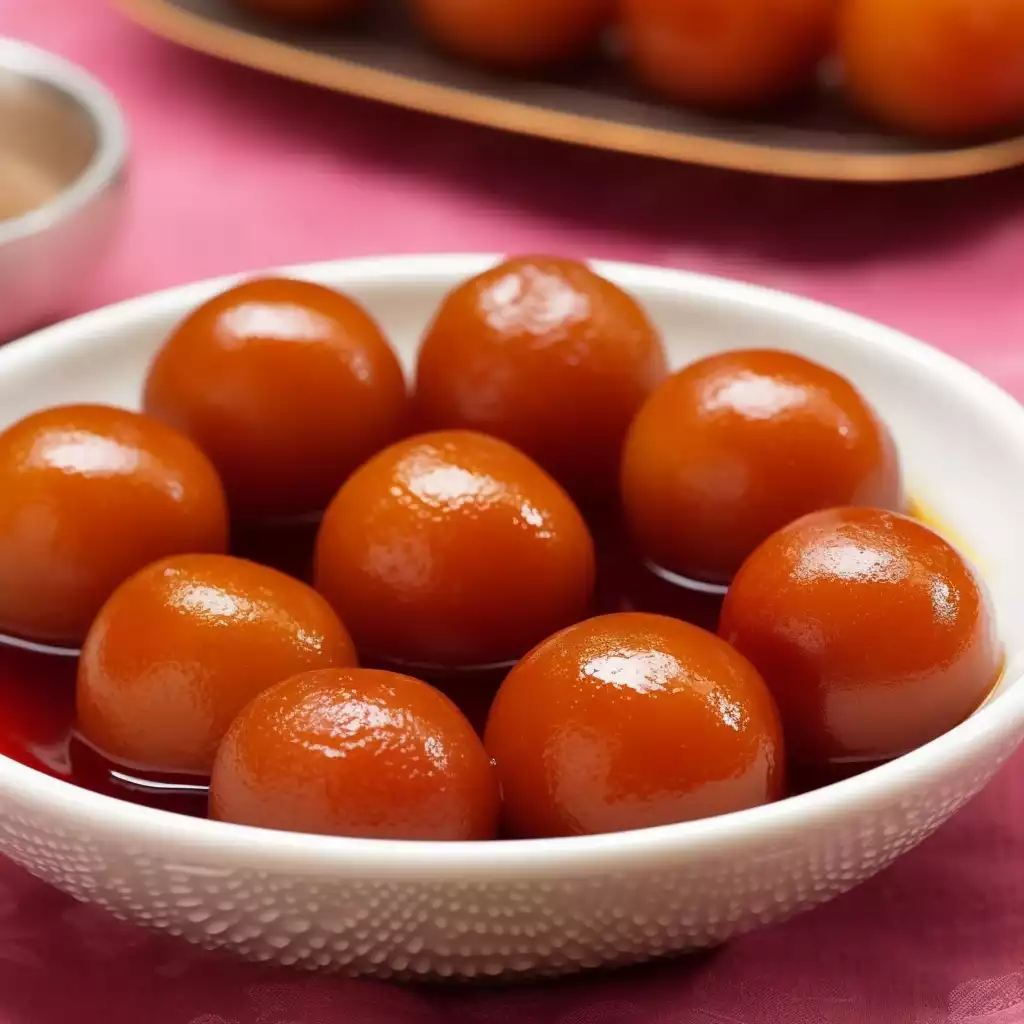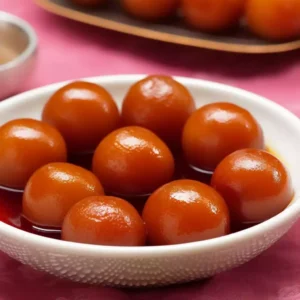
Have you ever indulged in the sweet, syrupy goodness of a perfectly made Gulab Jamun? This delectable dessert holds a special place in the hearts of many, with its origins dating back centuries in the Indian subcontinent.
Legend has it that Gulab Jamun was first created during the Mughal era, where it was served as a royal treat to emperors and their guests. The name itself is derived from Persian words, with “Gulab” meaning rose water and “Jamun” referring to a South Asian fruit with a similar size and shape to the dessert.
The recipe for Gulab Jamun may seem daunting at first, but with a little practice and patience, you can master the art of creating these melt-in-your-mouth delicacies. The key ingredients include milk powder, flour, ghee, and sugar, all coming together to form soft, spongy balls that are then soaked in a fragrant sugar syrup infused with cardamom and rose water.
Whether you’re celebrating a special occasion or simply craving a sweet treat, Gulab Jamun is sure to satisfy your dessert cravings. So why not give this traditional recipe a try and experience the rich history and flavors of this beloved Indian dessert for yourself?
Expert Tip: To achieve perfectly cooked gulab jamuns with a golden exterior and a soft interior, it’s crucial to maintain the oil temperature at around 180°C throughout the frying process. Use a thermometer to monitor the temperature accurately.
Milk Powder: Milk powder is a key ingredient in making gulab jamun. It adds a rich and creamy texture to the dough, resulting in soft and moist dumplings.
Plain Flour: Plain flour is used to bind the ingredients together and give the gulab jamun its structure. It helps create a smooth and elastic dough.
Baking Powder: Baking powder is a leavening agent that helps the gulab jamun to rise and become light and fluffy when fried.
Egg: The egg acts as a binding agent, helping to hold the ingredients together and giving the gulab jamun a tender texture.
Milk: Milk is used to bring the dough together and create a smooth consistency. It also adds moisture to the gulab jamun.
Butter: Butter adds richness and flavor to the gulab jamun dough. It helps create a tender and melt-in-your-mouth texture.
Green Cardamom Pods: Green cardamom pods are used to flavor the sugar syrup that the gulab jamun is soaked in. They add a warm and aromatic touch to the dessert.
Sugar: Sugar is the main sweetener used in the syrup for gulab jamun. It creates a sticky and sweet coating for the dumplings.
Lemon Juice: Lemon juice is added to the sugar syrup to balance out the sweetness and add a hint of tanginess. It helps enhance the flavors of the gulab jamun.
Expert Tip: When shaping the dough into balls, avoid overworking it. Overworking can lead to tough gulab jamuns.
When serving Gulab Jamun, it is important to consider the traditional accompaniments and pairings that enhance the overall experience of enjoying this sweet treat. Here are some serving suggestions and pairings to elevate your Gulab Jamun experience:
Expert Tip: After frying, allow the gulab jamuns to soak in the sugar syrup for at least 30 minutes.
Gulab Jamun is a popular Indian dessert made of deep-fried dough balls soaked in a sweet syrup. It is often flavored with cardamom, rose water, or saffron.
Gulab Jamun can be enjoyed on its own as a sweet treat or served with a scoop of vanilla ice cream for a delicious dessert combination.
Gulab Jamun can be enjoyed both hot and cold. Some people prefer to eat it warm, while others like it chilled from the refrigerator.
Traditional Gulab Jamun is not vegan-friendly as it contains dairy products such as milk solids (khoya) and ghee. However, there are vegan versions available that use plant-based ingredients.
Gulab Jamun can be stored in an airtight container at room temperature for up to 2-3 days. If refrigerated, it can last for up to a week.
Yes, Gulab Jamun can be frozen for up to 2-3 months. To reheat, simply thaw them in the refrigerator overnight and warm them in the microwave or on the stovetop.
Here are some more recipes for you to enjoy! If you my recipes don’t forget to rate and leave a comment.
If you have any recipe suggestions, please do not hesitate to ask me. A great way to stay in contact with me is through Instagram, Facebook, Twitter and YouTube. Don’t forget to tag me @CookwithNabeela in your recipe photos!

Subscribe now to receive my latest recipes directly in your inbox. Stay up-to-date and never miss out!
Add your first comment to this post